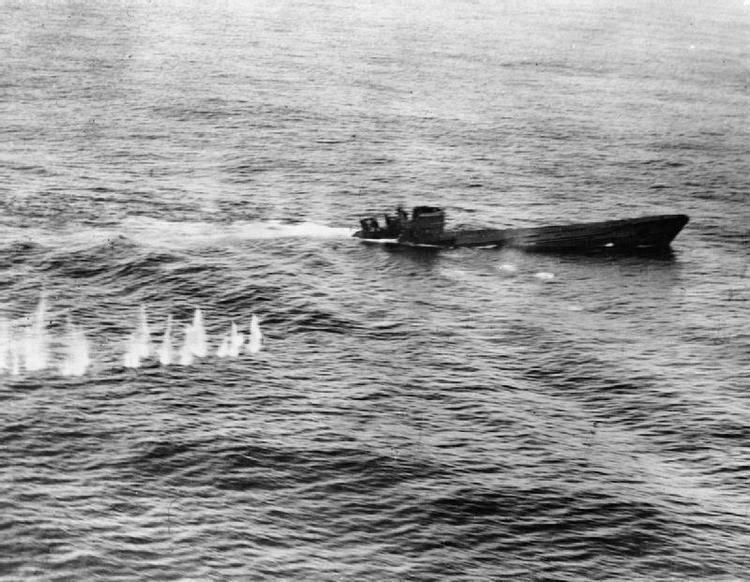Name U-426 Yard number 127 Commissioned 12 May 1943 Launched 6 February 1943 Draft 4.74 m | Ordered 5 June 1941 Laid down 20 June 1942 Construction started 20 June 1942 Length 67 m Beam 6.18 m | |
 | ||
Fate Sunk by an Australian aircraft, January 1944 Part of | ||
German submarine U-426 was a Type VIIC U-boat of Nazi Germany's Kriegsmarine during World War II.
Contents
She carried out two patrols. She was a member of seven wolfpacks. She sank one ship.
She was sunk by an Australian aircraft in January 1944
Design
German Type VIIC submarines were preceded by the shorter Type VIIB submarines. U-426 had a displacement of 769 tonnes (757 long tons) when at the surface and 871 tonnes (857 long tons) while submerged. She had a total length of 67.10 m (220 ft 2 in), a pressure hull length of 50.50 m (165 ft 8 in), a beam of 6.20 m (20 ft 4 in), a height of 9.60 m (31 ft 6 in), and a draught of 4.74 m (15 ft 7 in). The submarine was powered by two Germaniawerft F46 four-stroke, six-cylinder supercharged diesel engines producing a total of 2,800 to 3,200 metric horsepower (2,060 to 2,350 kW; 2,760 to 3,160 shp) for use while surfaced, two Siemens-Schuckert GU 343/38–8 double-acting electric motors producing a total of 750 metric horsepower (550 kW; 740 shp) for use while submerged. She had two shafts and two 1.23 m (4 ft) propellers. The boat was capable of operating at depths of up to 230 metres (750 ft).
The submarine had a maximum surface speed of 17.7 knots (32.8 km/h; 20.4 mph) and a maximum submerged speed of 7.6 knots (14.1 km/h; 8.7 mph). When submerged, the boat could operate for 80 nautical miles (150 km; 92 mi) at 4 knots (7.4 km/h; 4.6 mph); when surfaced, she could travel 8,500 nautical miles (15,700 km; 9,800 mi) at 10 knots (19 km/h; 12 mph). U-426 was fitted with five 53.3 cm (21 in) torpedo tubes (four fitted at the bow and one at the stern), fourteen torpedoes, one 8.8 cm (3.46 in) SK C/35 naval gun, 220 rounds, and an anti-aircraft gun. The boat had a complement of between forty-four and sixty.
Service history
The submarine was laid down on 20 June 1942 at the Danziger Werft (yard) at Danzig (now Gdansk), as yard number 127, launched on 6 February 1943 and commissioned on 12 May under the command of Kapitänleutnant Christian Reich.
She served with the 8th U-boat Flotilla from 12 May 1943 and the 11th flotilla from 1 October of that year.
Patrols and loss
The boat's first patrol was preceded by a trip from Kiel in Germany to Bergen in Norway. U-426 then left Bergen on 5 October 1943 and headed for the Atlantic Ocean via the gap between Iceland and the Faroe Islands. She sank the British ship Essex Lance on 15 October 408 nautical miles (756 km; 470 mi) east of Cape Farewell (Greenland). The submarine arrived in Brest in occupied France on 29 November.
Her second sortie began on 3 January 1944. On the 8th, she was attacked and sunk by depth charges dropped by an Australian Sunderland flying boat of No. 10 Squadron RAAF.
Fifty-one men went down with the U-boat; there were no survivors.
Wolfpacks
U-426 took part in seven wolfpacks, namely.
